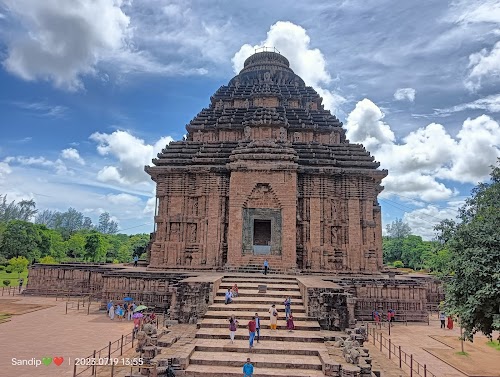
Konark Sun Temple
Puri, India
- Admire the intricate carvings
- Attend the Konark Dance Festival (December)
- Explore the temple complex
- Visit the Konark Archaeological Museum
- Witness the sunrise or sunset
Known for:
Description:
The Konark Sun Temple, located in Konark, Odisha, India, is a 13th-century CE Sun Temple dedicated to Surya, the Hindu Sun God. Built from sandstone in the shape of a gigantic chariot with elaborately carved stone wheels, pillars, and walls, the temple is renowned for its architectural grandeur and intricate sculptures. The chariot is led by seven horses, symbolic of the seven days of the week and the passage of time. Depictions of Hindu deities, celestial nymphs, scenes from daily life, and erotic sculptures adorn the temple walls, showcasing the rich artistic traditions of the period. Much of the temple is now in ruins, yet the remaining structure stands as a testament to the architectural prowess of the ancient Kalinga dynasty.
History:
The Konark Sun Temple was built in the 13th century CE by King Narasimhadeva I of the Eastern Ganga Dynasty. The temple's construction is shrouded in legends, with some attributing its design to the mythical architect Bisu Maharana. The temple's original purpose was likely to serve as a place of worship and a symbolic representation of Surya's celestial journey. Over centuries, the temple suffered damage from natural disasters and invasions, leading to its partial collapse. Conservation efforts have been undertaken to preserve the remaining structure and protect it from further deterioration. The Konark Sun Temple is a UNESCO World Heritage Site and remains a significant pilgrimage site and tourist attraction.